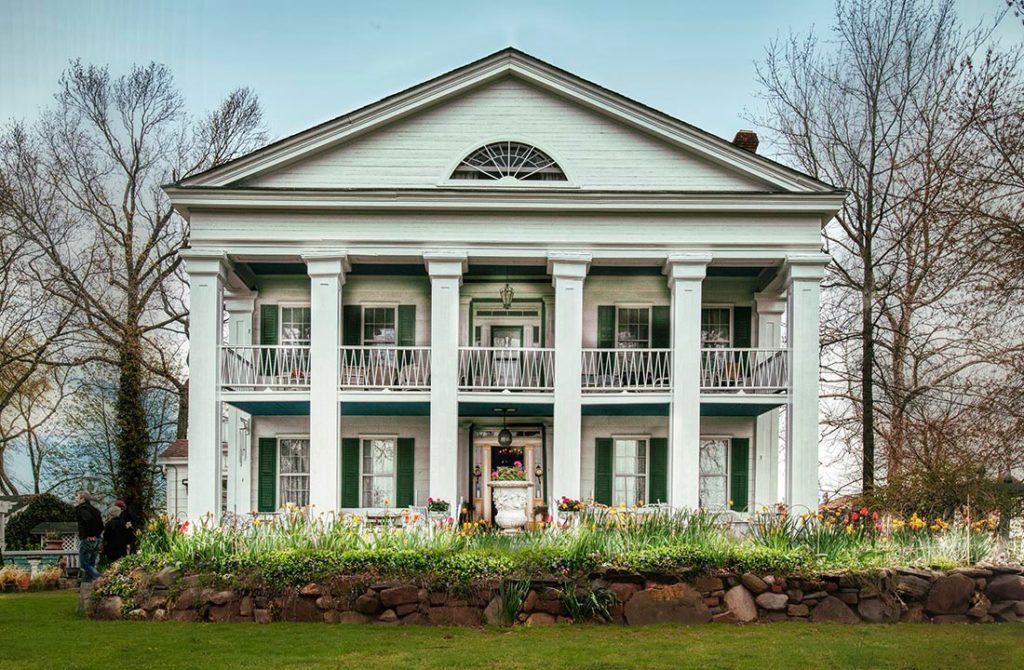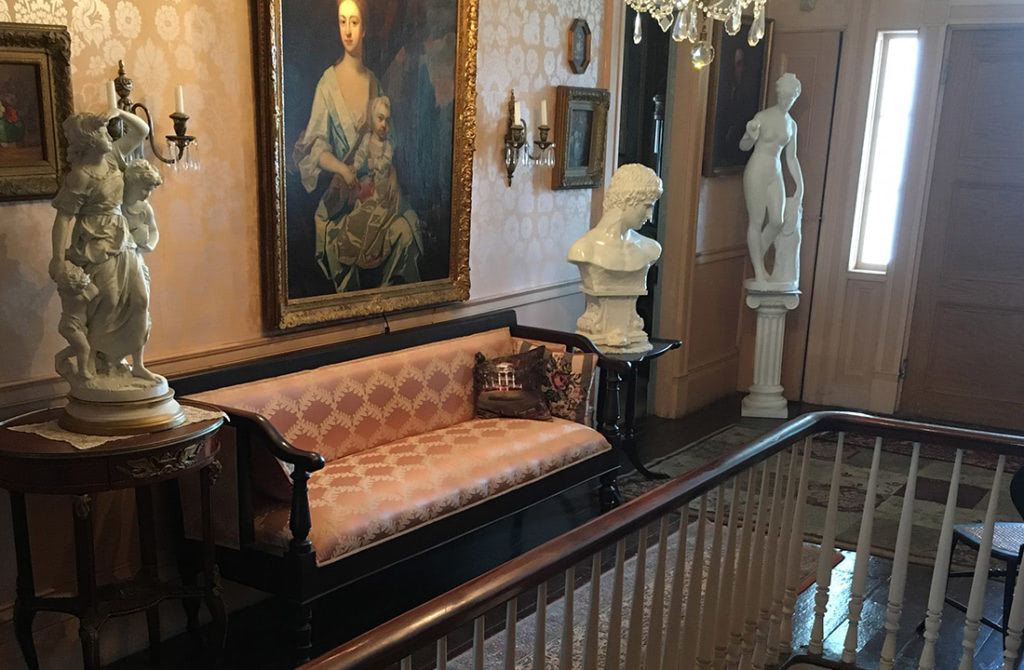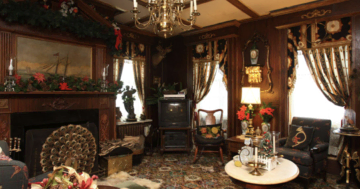A monument to the borough’s agricultural and industrial history, Seguine Mansion is one of the grandest 19th-century homes on Staten Island.
By 1786, James Seguine had purchased a large parcel of land overlooking Prince’s Bay. His grandson, Joseph Seguine, built the current Greek Revival-style house in 1838. In addition to operating the family’s thriving oyster harvesting business, Joseph helped establish the Staten Island Railroad Company, founded the Staten Island Oil and Candlemaking Company on his own property, and owned extensive farmland in the surrounding neighborhood.
The Seguines’ home reflects their prosperity. On the grand facade facing the water, six monumental square columns support a second floor gallery and classical pediment with a sweeping fanlight. Inside the house, Greek Revival mantels and plasterwork grace the spacious rooms, all of which feature tall windows and doors to circulate cool ocean breezes throughout the house. A wide, sloping lawn opens a broad vista to the bay.
Financial reversals forced the family to sell the property just after the Civil War, but descendants repurchased the house and the 10 surviving acres in 1916. After a long search for an appropriate buyer, Elizabeth Seguine Aug sold the house in 1981 to George Burke, who arranged for its transfer to the City of New York in 1989.
Today, the New York City Department of Parks & Recreation operates the mansion as a historic house museum. The mansion and its elegant gardens are open to the public for scheduled tours led by the Urban Park Rangers during the spring, summer, and fall.


Seguine Mansion is owned by the New York City Department of Parks & Recreation and is a member of the Historic House Trust.
If you would like to donate to Seguine Mansion directly, please click here.





